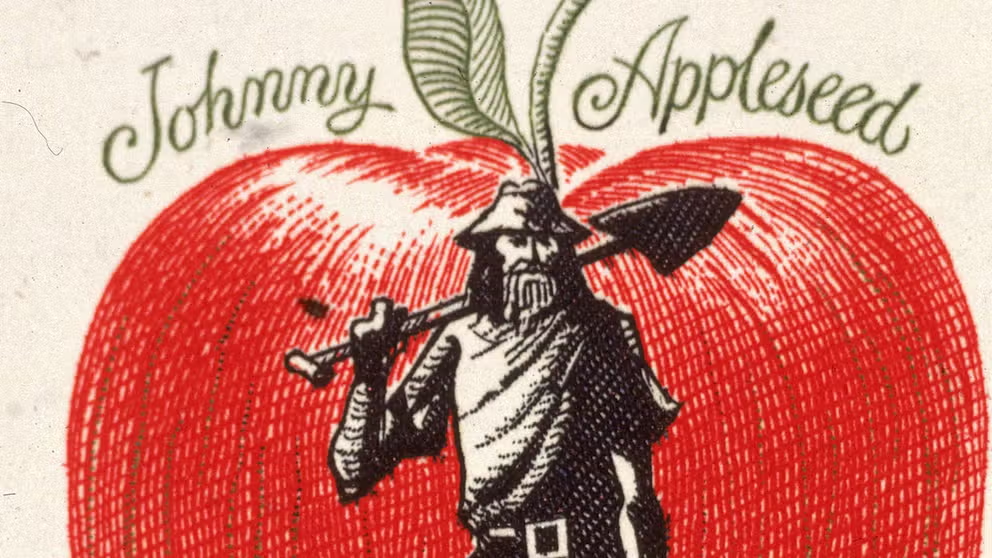How Johnny Appleseed helped establish the American frontier
The mythical folk hero was a real man — a gentle soul who used apples and religion to help pioneers in the 19th century.
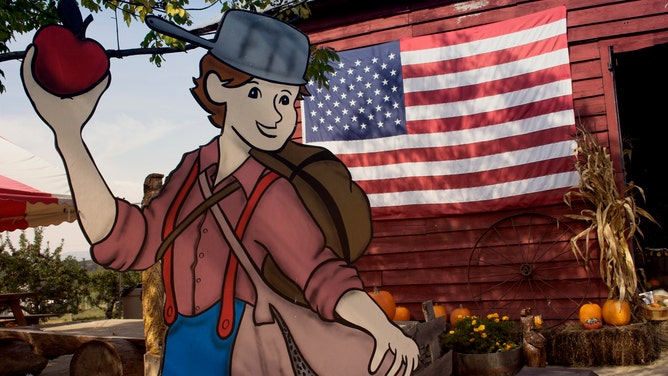
A sign in the shape of Johnny Appleseed advertises a family apple farm.
(Tony Savino / Corbis / Getty Images)
We all know his story — or at least, we think we do.
Myths often describe him as a quirky character, a ragged vagrant who wore a tin pot hat while growing apple orchards across the country.
While apples and simple living indeed formed the core of such a beloved character, the real story about Johnny Appleseed is far more complex.
It involves the settlement of the Midwest, the rise of a new religion and how one man’s unique gentility and kindness helped turn him into a folk hero.
Here’s John(ny)
Johnny Appleseed: The man and the myth
Johnny Appleseed is a famous American myth, but did you know he's based on a real person named John Chapman?
First things first: His real name wasn’t "Johnny Appleseed".
"He was ‘John Chapman’," said Jeff Taylor, retired teacher and professor of education and the past president of the Johnny Appleseed Society. "What little evidence we have suggests that he really didn't prefer to be called 'Johnny'."
According to Taylor, evidence also suggests that Chapman did not prefer to be called "Appleseed," either. He signed documents as "John Chapman," and only one document exists of him signing his name as "John Appleseed."
Pinning down other truths about his life can be challenging, as he left behind very few belongings and thus, very few clues.
"He kept no journals or diaries," Taylor said. "It would appear that he believed in what I would call Christian simplicity, the idea that living simply is an obligation, that our role in the world is to be of use to others."
"And so, spending time on acquiring things for ourselves just gets in the way of what we're here for," Taylor added.
On the origin of Appleseed
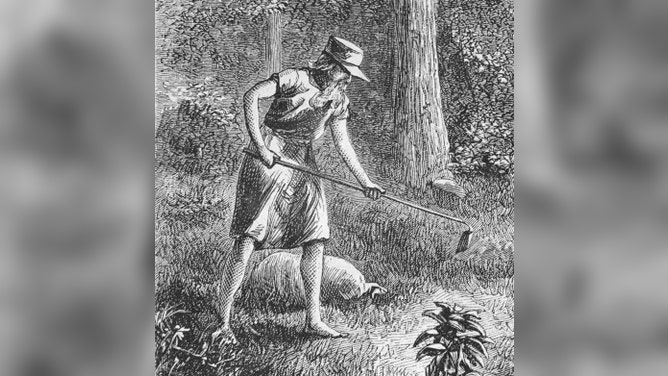
Chapman planting apple seeds in the wilderness. Although he never wore a tin pot hat, he is believed to have made and worn a baseball cap-like hat with a long front brim to keep the sun out of his eyes while he worked.
(Bettmann / Getty Images)
John Chapman was born in Leominster, Massachusetts in 1774. As he was born before the American Revolution, Chapman was technically an English citizen.
Over the next few decades, as the newly formed United States grew, so did Chapman’s adventures. He hoofed his way from his home in Massachusetts to Pennsylvania and then to midwestern states.
"He shows up on the voting register in Mount Vernon, Ohio, which is in the area around Richland, Ashland counties, which people in Ohio refer to as the Johnny Appleseed country," said Taylor. "This is where he spent a lot of his time from the early 1800s until the 1830s."
"That’s when the stories begin," Taylor added.
According to Taylor, one of the stories involved Chapman’s unusual attire. He wore cast-off clothing, as part of his choice to live simply, and occasionally wore old sacks initially used to contain coffee and flour.
But of all the strange things he wore, he never donned the fabled kitchenware.
"The tin pot is total fabrication," said Taylor. "There's no evidence that he ever wore a tin pot as a hat."
Another common, but much larger theme in these stories was Chapman’s affection for apples.
How about them apples
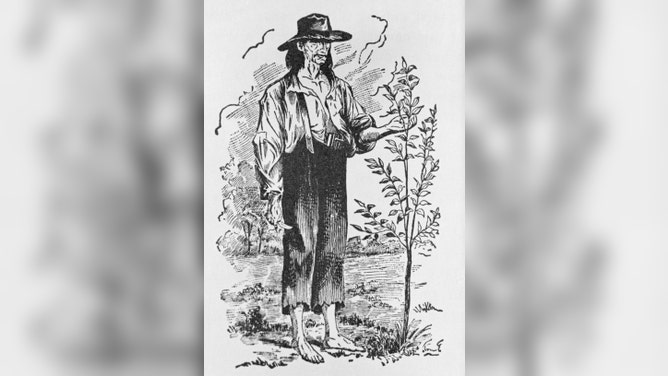
Johnny Appleseed nursing a tree.
(Bettmann)
"It wasn't just that he loved apples and planted apple trees," Taylor said. "There was an actual market for apple trees, and he served that market."
At the time, apples were more than just a sweet, healthy treat. Rather, they were a versatile fruit that helped people survive and their farms thrive.
According to Taylor, apples were often used to feed and fatten up pigs, making the hogs worth more at the market. Apples were also used to create vinegar, a preservative and cleaning agent — a crucial concoction in the far-from-sanitary frontier.
Apples were also used to make hard cider. Estimated to contain around 2% alcohol, hard apple cider was one of the safest ways for people to hydrate at this time.
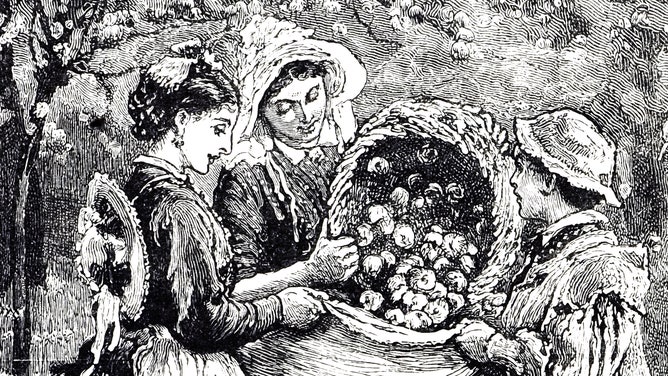
Fruit pickers in the 19th century collecting apples for cider.
(Universal History Archive / Universal Images Group / Getty Images)
"Most Americans in the 18th century agreed that it was just too dangerous to drink water unless you had a deep well," Taylor said.
Chapman catered to this demand for apples by planting, not the orchards commonly told in Appleseed folklore, but apple nurseries.
According to Taylor, Chapman would plant apple seeds that would sprout and then grow for 2-3 years. Chapman sold these saplings, which buyers would dig up and then transplant onto their own property.
"Planting a small orchard was an essential part of starting a farm on the frontier," Taylor said.
While apple orchards provided for needs such as livestock feed, cleaning agents and a safe beverage to drink, they also had a much larger impact on settlers in the Midwest.
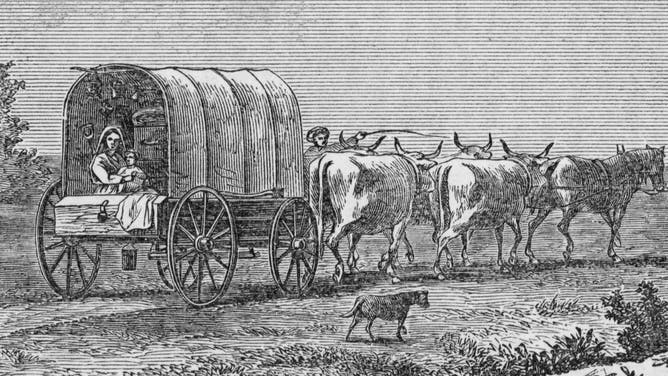
A party of emigrants travel from Connecticut to eastern Ohio during the westward expansion of the United States, 1805.
(Kean Collection / Archive Photos / Getty Images)
According to Taylor, at the time, tracts of frontier land could be purchased from the government. But to truly claim that property (and to ward off land speculators), settlers had to meet a few requirements — and one of them was planting a certain number of trees on their newly purchased land.
"They were in the market for inexpensive trees, and that's what [Chapman] was selling," Taylor said. "He was an important part of the work of clearing the wilderness and establishing the farming communities."
These communities grew into towns and then, eventually, into cities in Ohio, Indiana and Illinois.
Finding his religion
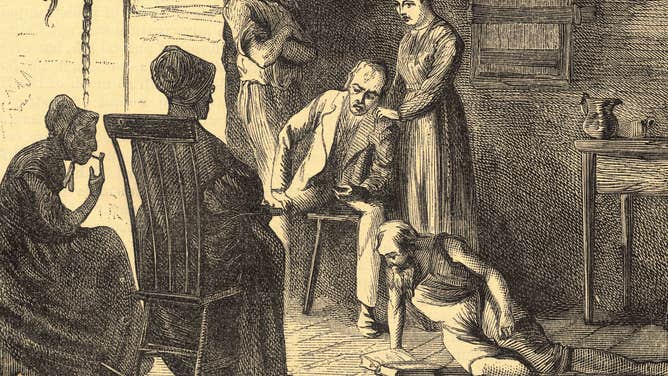
An image titled "News Right Fresh From Heaven" depicts Chapman, sitting on the floor, preaching in a pioneer house.
(Bettmann / Getty Images)
As Chapman facilitated the spread of apple trees in the Midwest, he also helped spread the word of a new sect in Christianity called the Church of the New Jerusalem.
It was built around the writings of Swedish scientist and mystic Emanuel Swedenborg, according to Taylor. Also known as Swedenborgian, the religion arrived in the U.S. in the late 18th century, when it found a new convert in John Chapman.
"He was an avid Swedenborgian," Taylor said. "He was essentially a missionary for the Church of the New Jerusalem, and he spent a lot of time talking religion with very educated people in Ohio."
His faith inspired him to proselytize and to live a life of peace.
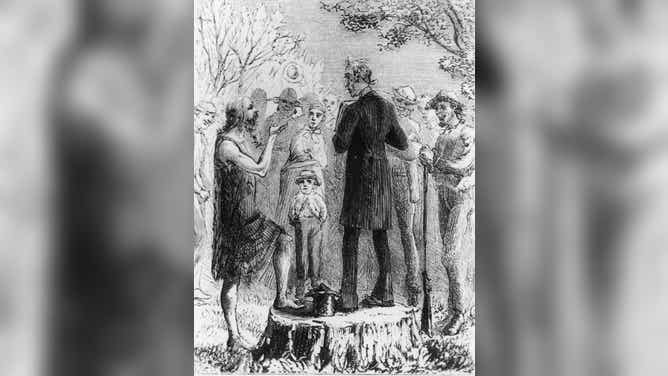
A raggedly dressed Chapman speaks to settlers.
(Fotosearch / Stringer / Getty Images)
"Unlike some of the frontier people like Daniel Boone or Davy Crockett, we don't see Chapman confronting the Native Americans," Taylor said. "Instead, he's somebody who travels in the woods, has relationships with the Indians and spreads his brand of civilization in a peaceful way by planting seeds that everybody can use, including the Native American."
According to Taylor, Chapman’s gentle approach made him an interesting figure.
"He was not confrontational and, because he wasn't confrontational, he was able to make some real connections," Taylor said. "Some people see that as the kind of American frontier that they like to think of."
The folk hero
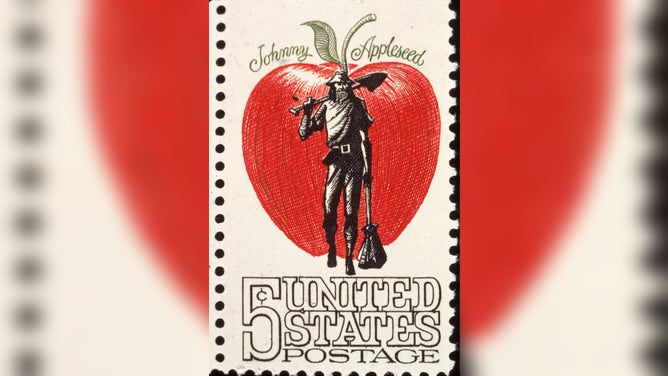
A 1966 U.S postage stamp depicting John Chapman, a.k.a. Johnny Appleseed in front of a large red apple.
(Blank Archives / Getty Images)
According to Taylor, when Chapman died in 1845, he left over a thousand acres of land that were in his name; and in keeping with the settlement requirements of the time, Chapman’s land had apple trees growing on it.
"He was successful in his own terms," Taylor said.
Long after Chapman passed away, his reputation grew to become legend, making the man a figure who was larger than life.
"He became another Mike Fink, Davy Crockett, Daniel Boone, Pecos Bill, Paul Bunyan — some of them real, some of them not real," said Taylor. "It didn't really matter back then whether they were real or not real. What was important is they were American. They were about the settling of America, Johnny Appleseed, the settling story."
